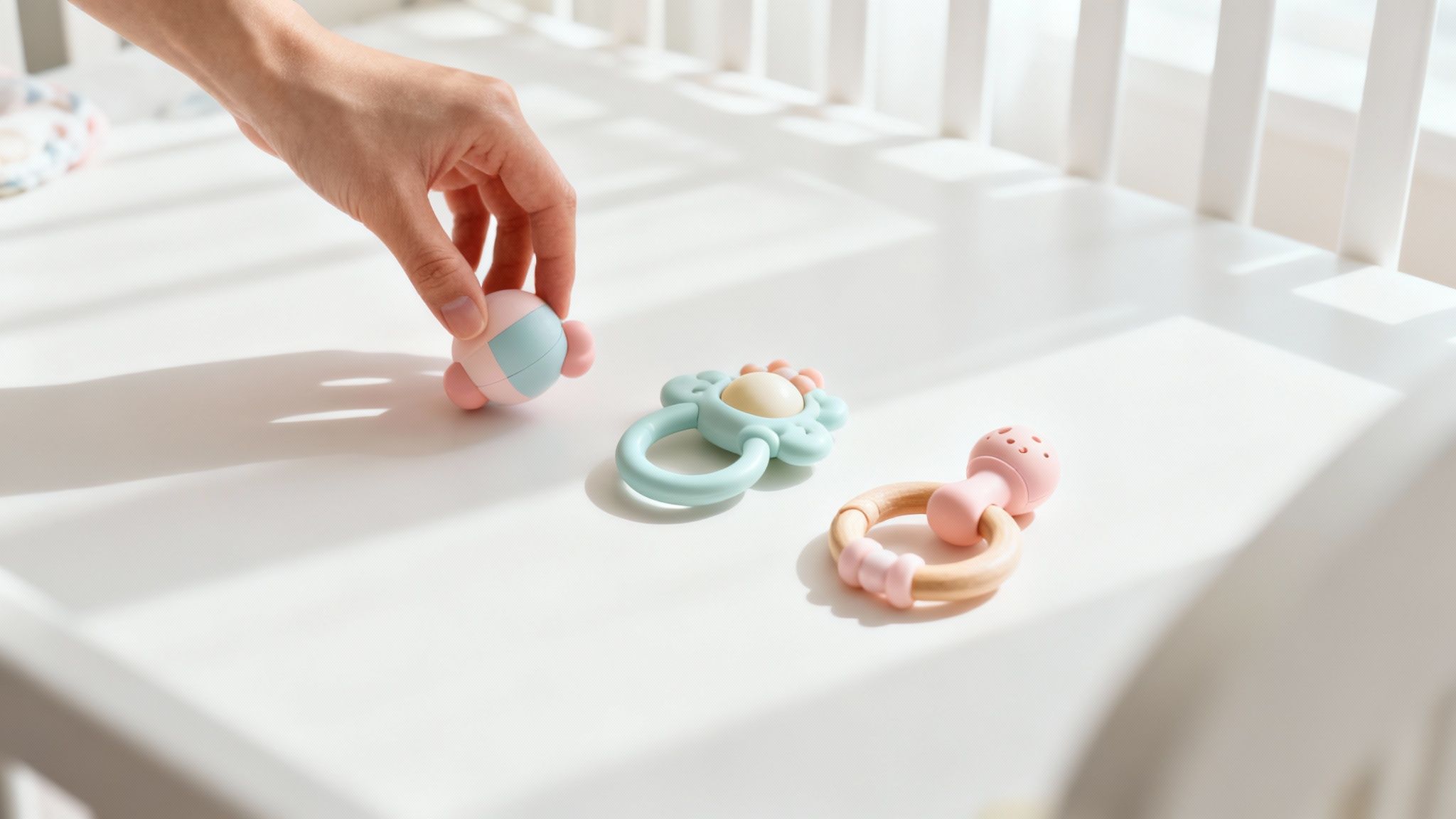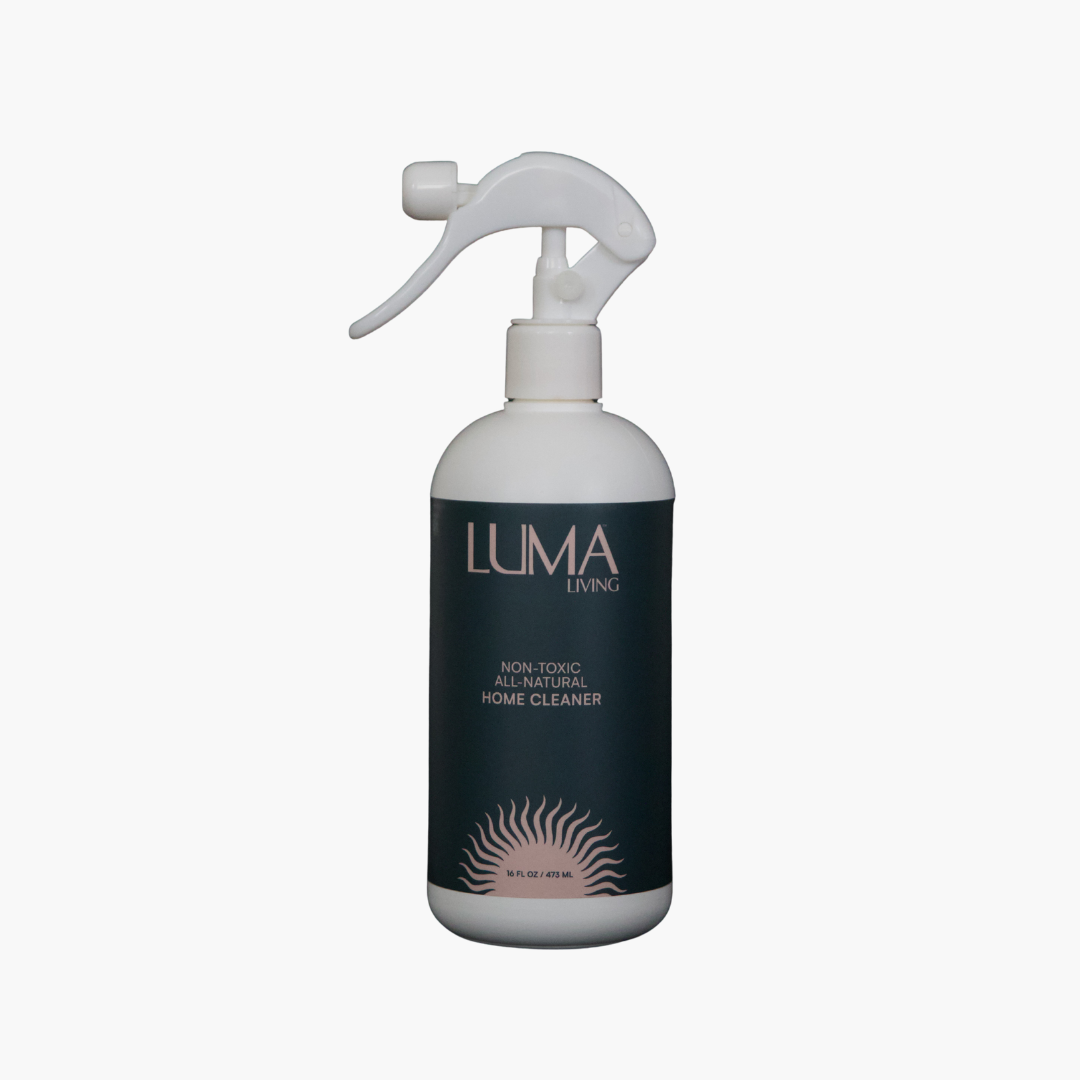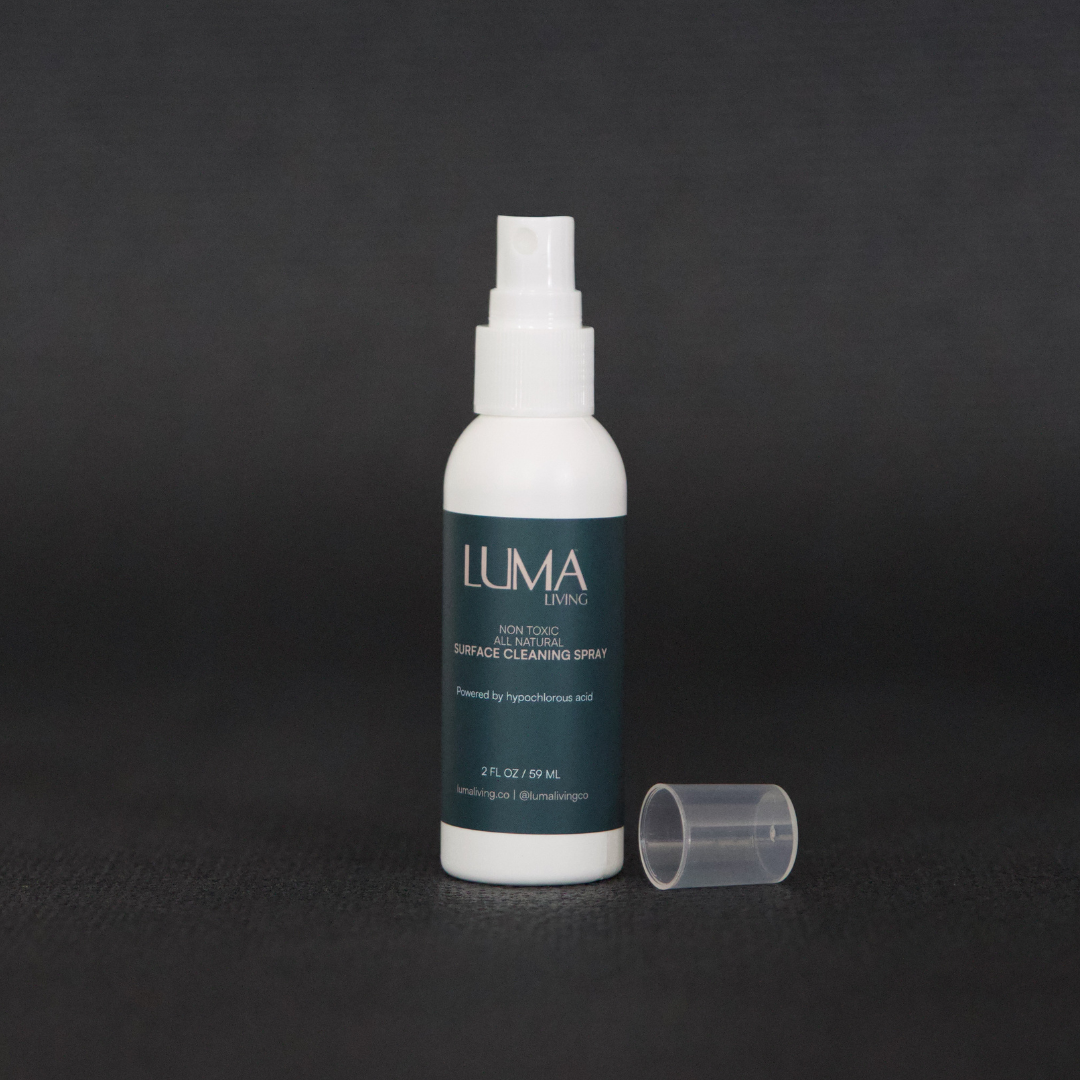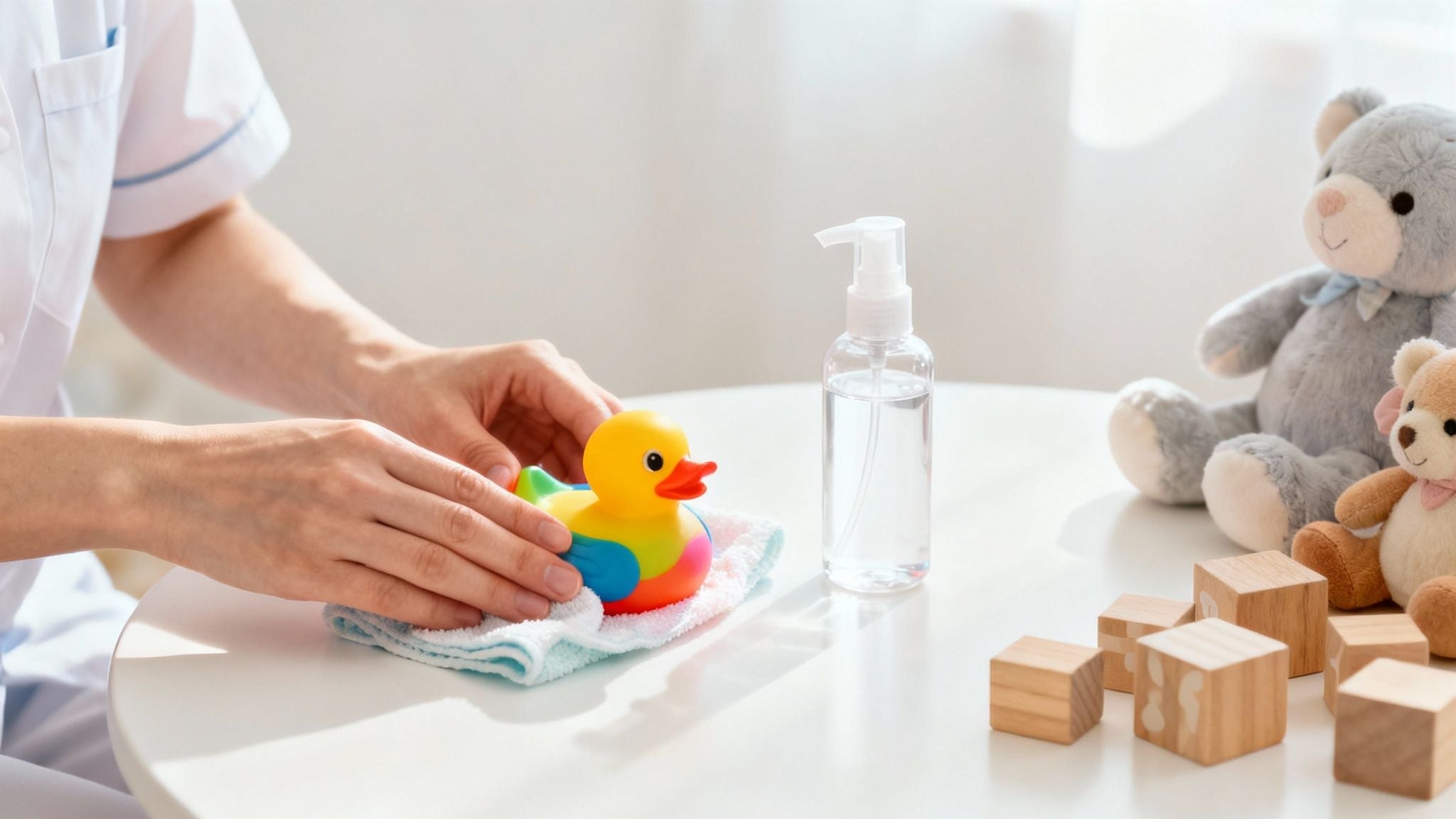Keeping your baby’s toys clean is a simple part of creating a safe home. It involves consistent routines and gentle, residue-free solutions. To clean effectively, wipe away any visible grime, then mist with a suitable cleaner. A simple solution like one with hypochlorous acid (HOCl) can be used. Just let the toy air dry. This minimal approach keeps toys ready for play without exposing your baby to harsh chemicals. Here’s how to clean safely and simply.
Keeping Playtime Simple and Safe
A parent’s goal is to create a clean world for their child without using harsh chemicals. A safe play environment allows a child’s curiosity to flourish. Building that space should not involve complicated or stressful cleaning rituals.

This guide outlines a calm, straightforward method for cleaning toys effectively. It ensures they are free from unwanted residues and fragrances. The process puts your family's well-being first and supports your peace of mind.
A Calm Approach to Cleaning
Simple routines you feel good about help in creating a healthy and clean home environment for small children. When toys are constantly in a baby’s hands and mouth, how we clean them matters. It is about feeling confident in the surfaces your child touches every day.
A minimal, caring approach helps achieve this. It involves knowing what to use and what to avoid. This creates a cleaning system that feels manageable for everyone, including pets.
A truly safe play area is one where toys are free from both grime and the lingering effects of harsh cleaning agents. Clean should not come with compromise.
Why Gentle Toy Cleaning Matters
Babies explore the world through touch and taste. This mouth-first curiosity is part of their development. It also means their toys are in constant contact with many surfaces. The way we clean their toys is a cornerstone of a healthy home.
A gentle, consistent cleaning routine does more than remove daily grime. It provides a sense of calm. You can feel confident that your baby’s playthings are simply clean. They are free from the harsh fragrances or residues left by many conventional cleaners. It is about creating a space where your child can safely discover and play.
The Science of Safe Surfaces
An infant’s skin is thinner and more absorbent than an adult's. Substances can be absorbed more readily into their delicate systems. This biological fact is why a gentle approach to cleaning is important.
Improperly cleaned toys can collect microbes. This is why the market for baby-safe cleaning agents has grown. Parents are seeking products that clean well without leaving behind irritating substances.
Peace of Mind in Every Interaction
Ultimately, cleaning your baby’s toys supports your peace of mind. It is the reassurance that the teething ring or soft block your baby loves is clean. You can focus on the joy of watching them play, not on what might linger on their toys.
Adopting a simple cleaning method allows parents to shift their focus from worry to connection. Trust in your cleaning products helps create a more relaxed and present environment.
That confidence comes from choosing a solution that is both effective and gentle. By understanding the principles of baby-safe cleaning simplified, you can build a practical routine. The best cleaning practices fit seamlessly into your life and support your family’s well-being.
What Most People Get Wrong When Cleaning Baby Toys
Many common household cleaners contain harsh chemicals and strong fragrances. These are not a good match for items a baby will put in their mouth. Understanding why some popular methods fall short is the first step toward a better way.
Consider common cleaning wipes. While they seem like a quick fix, some are designed to leave behind a residue. That residue can linger long after you have wiped the surface. This is not ideal for items in constant contact with a baby's hands and mouth.
Overpowering Scents and Material Damage
The "clean" smell associated with household products can be overwhelming for an infant. A truly clean toy should not smell like anything at all. It should just be clean.
Even popular DIY solutions like white vinegar can cause problems. The acidity in vinegar can break down certain materials over time. It can make soft plastics, painted wood, or silicone brittle or sticky.
The best cleaning methods protect both your child and their belongings. A gentle solution should clean effectively without causing material damage or leaving unwanted chemical footprints.
The Shift Toward Safer Formulations
Parents are moving away from harsh cleaning products, and the market is responding. This shift is driven by the demand for gentle, hypoallergenic formulas. One global sample shows that many parents prefer products that are safer for their children. This mindset is changing how we think about cleaning toys. You can find more data in this detailed industry report.
Once you see the common pitfalls, it becomes clearer what to look for. A better way to clean exists, one that gives you peace of mind without compromise.
The Better Way: A Gentle, Science-Based Approach
Moving past harsh cleaners and questionable DIY solutions reveals a simpler way to clean. The best approach uses gentle science to give you peace of mind. It is a method that cleans effectively without leaving anything behind. No residues, no fragrances, just a clean surface ready for playtime.
This is where a compound called Hypochlorous Acid (HOCl) comes in. The science is simple. HOCl is the same substance the human immune system creates to support healing. It is one of the gentlest and most effective cleaning agents available.
The Power of Simplicity
HOCl is created using just three ingredients: salt, water, and electricity. An electrical current passes through the saltwater solution, changing its chemical structure. This process creates a powerful cleaning agent without alcohol, fragrances, or harsh chemicals.
After its work is done, HOCl breaks back down into simple saltwater. It leaves no active chemical residue on surfaces. This is a significant benefit for items that go directly into a baby’s mouth. You do not have to worry about what might be left behind on a teether. It helps to begin by understanding the critical difference between sanitizing and cleaning.
The elegance of HOCl lies in its composition. It provides a powerful clean that is compatible with a sensitive home environment, including being around children and pets.
Meeting the Demand for Safer Cleaning
The shift toward gentle, effective cleaning solutions is a lasting change. Parents are more aware of infant hygiene than ever before. This awareness is driving real change in the market.
This growing demand reflects a collective desire for products that align with a family’s well-being. Parents are actively looking for solutions backed by science that deliver a residue-free clean. They want reassurance, not just strong chemicals. You can learn more about the science behind Luma Living’s approach and see how this principle is put into practice. This is about a more informed, caring way to maintain a healthy home.
Simple Steps for Cleaning Baby Toys
Keeping your baby’s toys clean does not need to be a complicated chore. While different materials need slightly different care, the process is simple. First, remove any visible dirt, then give the toy a quick clean. Let it air dry completely. That’s it.
This approach ensures every toy is clean and ready for your child. You can feel confident that surfaces are free from both grime and unwanted chemical residues.
1. Wipe Away Grime
For any toy—plastic, silicone, wood, or fabric—the first step is the same. Use a damp cloth to wipe away any visible food, dust, or dirt. This prepares the surface for a proper clean.
For hard, non-porous surfaces like plastic or silicone, this is straightforward. For wood, use a cloth that is just damp, not soaking wet, to avoid damaging the material. For fabric toys, gently blot away any spots or stains.
2. Clean and Air Dry
After the initial wipe-down, the next step is a simple clean. Lightly mist the toy with a gentle, fragrance-free HOCl solution. You do not need to soak it.
Then, simply let the toy air dry completely before returning it to the toy bin. For electronic toys, spray the cleaner onto a cloth first, then wipe the toy. This method cleans effectively without risk to the electronic components. The simple science of a hypochlorous acid cleaner works well on many household surfaces.
A Calm Approach to a Clean Home
Keeping your home clean and safe for your baby can be a calm part of your day. It does not have to be complicated or stressful. The goal is to feel good about the choices you make for your family's environment. Using simple, science-backed methods for cleaning toys and surfaces can trade worry for peace.
Building Confidence Through Simplicity
A thoughtful cleaning routine helps create a safe space for your little one to explore. It means no more guesswork about the harsh fragrances and unwanted residues from conventional cleaners. Instead, you can focus on what really matters, knowing your home is simply clean.
Choosing residue-free and fragrance-free solutions sets a standard of safety for the whole house. This minimal approach makes cleaning infant toys feel less like a chore and more like an act of care.
Peace of mind comes from trusting that your cleaning methods are as gentle as they are effective. It is about fostering a calm, healthy space where your child can safely play, learn, and grow.
This is not about perfection. It is about having a reliable system that fits your life and gives you a consistent sense of well-being. When you feel confident in the products you use, you can relax and enjoy the moments with your baby.
At Luma Living, our approach is rooted in gentle science. We aim to give families a simple, effective solution they can trust. Explore how we can help you maintain a calm and healthy home at https://lumaliving.co.


